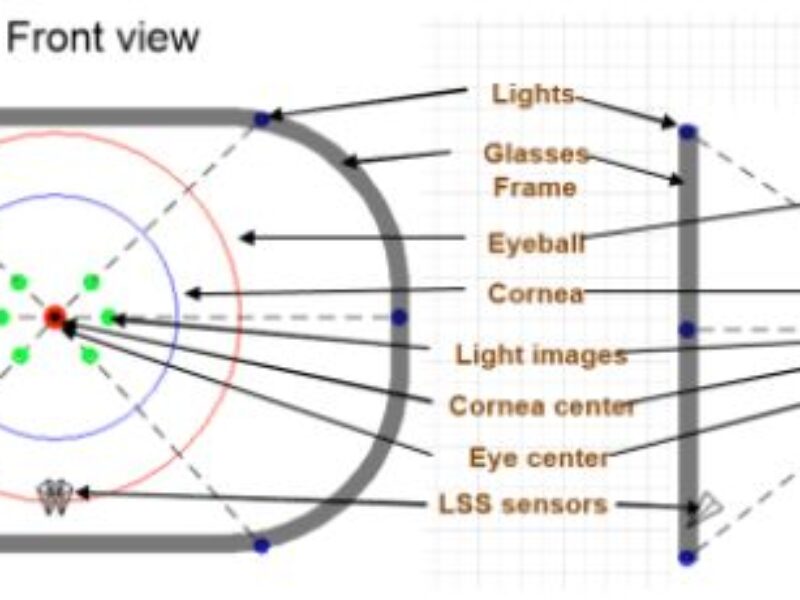
Rambus prototypes 2x2mm lens-less eye-tracker for headmount displays
The Lensless Smart Sensors (LSS) rely on a phase anti-symmetric diffraction grating (either tuned for optical or IR thermal sensing) mounted directly on top of a conventional imaging array and co-designed with computational algorithms that extract the relevant information from the scene to be imaged. The grating is very thin and boasts a wide field of view, up to 120º, and the resulting imaging sensor is almost flat (only a few hundred micrometres separate the grating from the image sensor).

The raw sensed image is encoded by the grating structure, calling for dedicated reconstruction algorithms and image processing, but in some applications such as range-finding or eye-tracking, it may not even be necessary to reconstruct a full image. Instead, extracting distance measurements may suffice and the particular phase anti-symmetric diffraction structure makes it very simple, explains the poster.
Light from left and right of the anti-symmetric boundary (at the centre of the grating) cancels in a curtain under the boundary. And the stereoscopic shift of the Point Spread Functions (PSF) of a point light source viewed through two gratings can be used to determine the distance of that light source with a much greater accuracy than would be feasible with stereoscopy using lenses, the authors write.
To put their theory into practice, the researchers designed an ultra-low power 2x2mm2 image sensor, with a 128×128 pixel array and integrated image change detection circuitry on the same die. They then used two identical phase gratings mounted in apertures on a shared pixel array. The gratings were only 1.86mm apart, each within apertures only 55μm in diameter. This setup was enough to measure distances up to 50cm with an error of less than 8%, they reported.

technology, with attached metal aperture and
phase grating.
The wide field of view and the very compact and flat form factor of such a stereoscopic lens-free sensor make it very well suited for wearable eye-tracking applications within smart goggles or head-mount displays. Here the light sources could be near-IR emitters integrated within the periphery of the glass frame.
“We do see this as a better, more accurate replacement for head-mounted eye tracking systems like those found in Virtual and Augmented Reality systems. We don’t target the LSS product for remote eye tracking, such as PC display or television based implementations”, clarified Paul Karazuba, Director of Product Marketing for Imaging at Rambus.
“We estimate we can reduce the cost of the optics in a system significantly, but as each application is different, it’s hard to place a general cost savings”, he added, talking about cost reductions.

So what sort of CMOS image sensor resolutions would Rambus typically recommend for such a lens-less eye-tracking application, and for anti-collision or SLAM robotic applications?
“For LSS in head-mounted eye tracking systems, we would likely use anywhere from CIF (352×288 pixels) to VGA (640×480 pixels), and for LSS in anti-collision or SLAM, we would use anywhere from CIF to 1Mp, application-dependent” Karazuba wrote eeNews Europe.
“Rambus has begun exploring licensing opportunities with select OEMs in our target markets. As part of this effort, we are securing a qualified third-party manufacturing chain that will allow our licensees to easily source LSS modules. We also offer licensees the option to manufacture LSS modules in their own facilities as well, if they have proper production capabilities to support LSS. The sensor resolution will be application- and market-dependent” he concluded.
Visit Rambus at www.rambus.com
Related articles:
Rambus readies lensless image sensor platform
Rambus develops lensless image sensor for IoT
Rice University reports no-lens camera
 If you enjoyed this article, you will like the following ones: don't miss them by subscribing to :
eeNews on Google News
If you enjoyed this article, you will like the following ones: don't miss them by subscribing to :
eeNews on Google News



